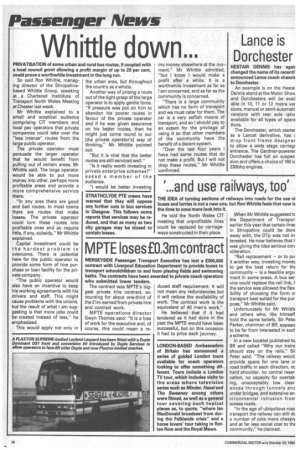'...and use railways, too'
Page 16

If you've noticed an error in this article please click here to report it so we can fix it.
THE IDEA of turning sections of railways into roads for the use ol buses and lorries is not a new one, but Ron Whittle feels that now is the time to once more look into it.
He told the North Wales CIT meeting that unprofitable lines could be replaced by carriageways constructed in their place.
When Mr Whittle suggested tc the Department of Transpor earlier this year that certain line: in Shropshire could be donE away with, the DTp was not in terested. He now believes that I. was giving the idea serious con. sideration.
"Rail replacement — or to pu. it another way, investing money to get the best return for thE community — is a feasible argu. ment in some areas. A bus ser vice could replace the rail link, the service was allowed the flex. ibility of choosing the form atransport best suited for the pur pose," Mr Whittle said.
Unfortunately for Mr WhittlE and others who, like himself hold the same beliefs, Sir Petei Parker, chairman of BR, appear: to be far from interested in such a scheme.
In a new booklet published by BR and called "Why our trainE should stay on the rails," Sii Peter said: "The railway woulc provide space for one lane a road traffic in each direction, nc hard shoulder, no central reser. vation, no capacity for overtak. ing, unacceptably low clear. ances through tunnels anc under bridges, and extensive en. vironmental intrusion frorr access roads.
"In the age of ubiquitous roac transport the railway can still dc a number of jobs more cheaply and at far less social cost to thE community," he claimed.


















































































































